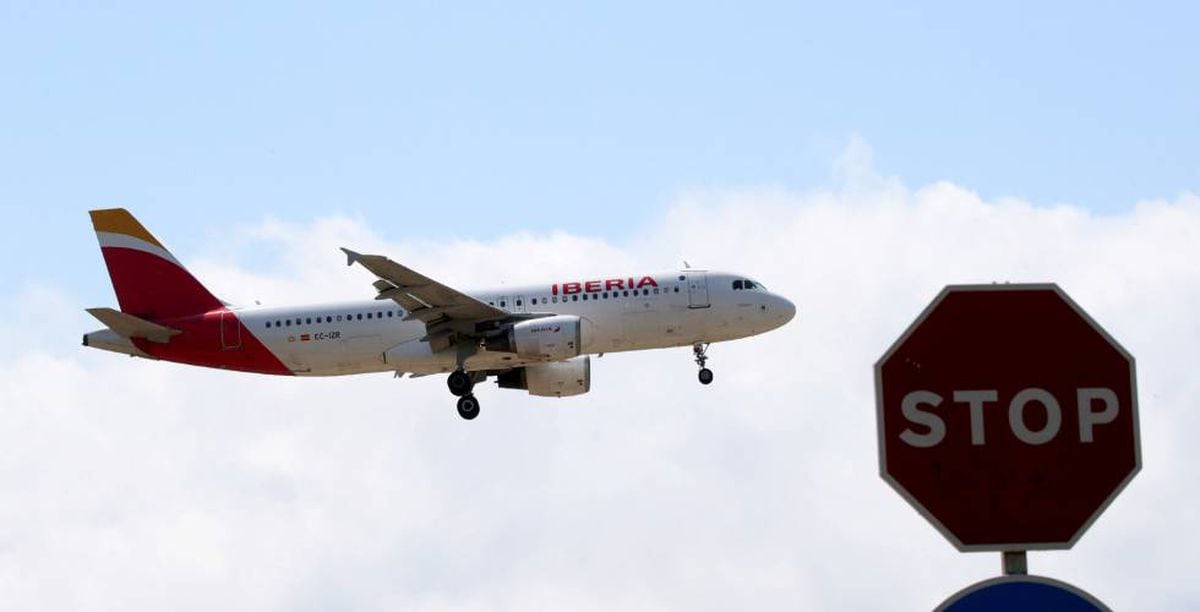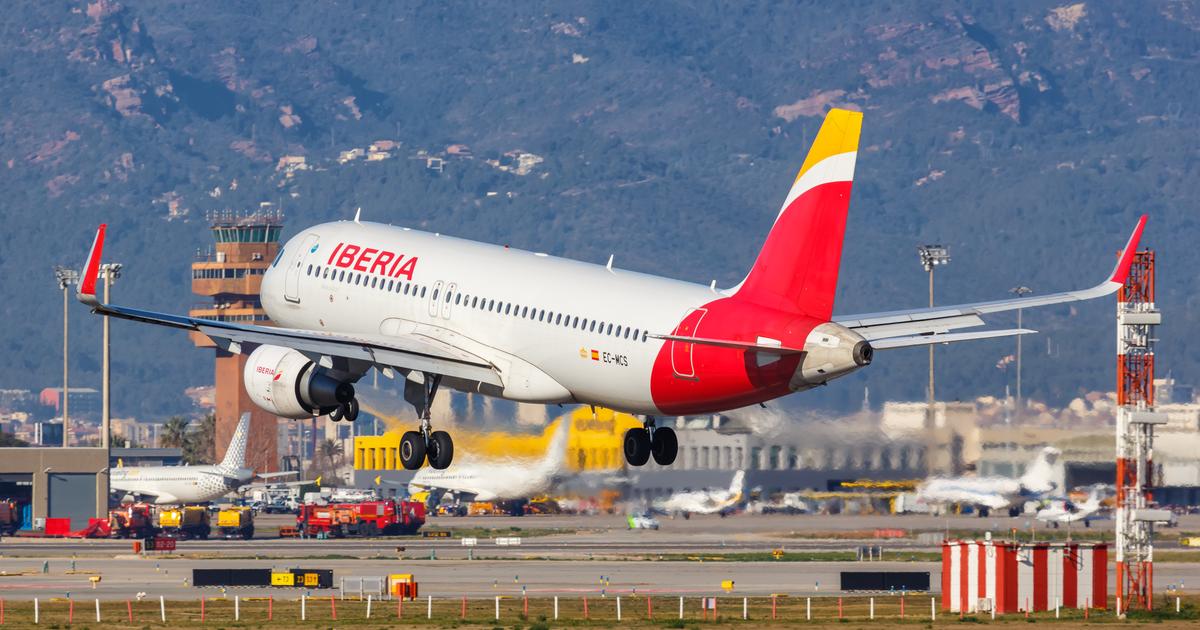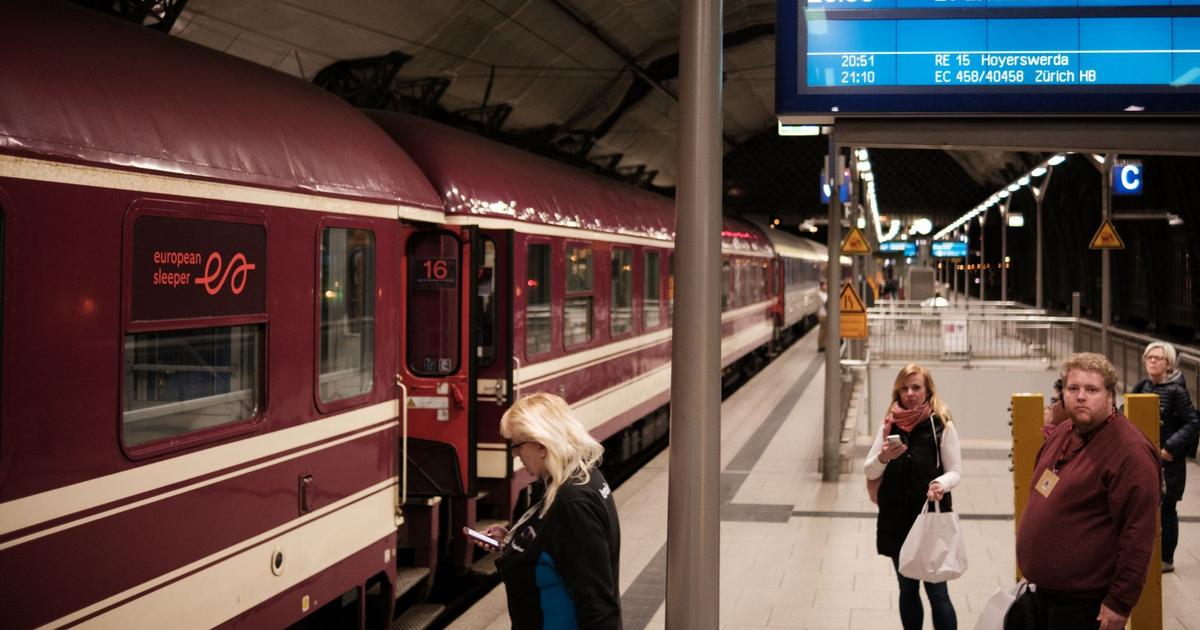In Spain today there are five main routes that are covered regularly by plane that can be made by train in a margin of two and a half hours, the time limit set by the decree approved this week in France to prohibit certain short flights within the country when there is a rail alternative. According to Adrián Fernández, managing director of the Spanish Railways Foundation (FEE), these routes are Madrid-Barcelona, Madrid-Valencia, Madrid-Alicante, Madrid-Seville and Madrid-Malaga. As this train expert has calculated, there are currently 560 weekly flights in Spain between these destinations (in one direction or another) replaceable by the railway in that time frame, being the route that moves more planes the Madrid-Barcelona air bridge, 256 per week.
The new French regulation, a pioneer in the world in the prohibition of air routes to reduce the emissions that cause global warming, has been received in Spain with both enthusiasm from environmental groups and rejection by the aviation sector. However, defenders and detractors agree that this decree is more symbolic than effective, because during its processing changes were introduced that lowered its ambition to a minimum. The original idea, proposed by the Citizens' Climate Convention, was to end air travel with a train alternative of less than four hours, which was later reduced to two and a half hours. But other requirements were also added that finally left out of the ban the vast majority of domestic flights from the neighboring country. According to Le Monde, of the 200,000 domestic air journeys per year in France, the ban affects only three air routes – Paris (Orly)-Bordeaux, Paris (Orly)-Lyon and Paris (Orly)-Nantes – with fewer than 5,000 trips per year. "The measure is testimonial, but the important thing is the message launched," says Fernández.
Despite staying in so little, organizations such as Ecologists in Action have not hesitated to ask for the approval in Spain of a similar prohibition, which in this case eliminates air travel with a rail alternative of up to four hours. Environmentalists say that between 2013 and 2019 domestic passenger flights increased by 27% in the country, increasing the emissions associated with these air trips by 30%, reaching 3.15 million tons of CO₂. Therefore, they have requested, together with 13 other social, union, environmental and youth entities, to include in the Spanish Sustainable Mobility Law a measure to suppress shorter flights, emphasizing the existence in the country of the most extensive high-speed rail network in the EU. In this sense, they specifically point out the plane journey between Madrid and Barcelona as one of the most polluting in domestic aviation. "The Madrid-Barcelona air bridge is by far the route with the most emissions of peninsular flights, but it has almost ceased to make sense, as it coincides just with one of the most developed railway corridors in the country," says Pablo Muñoz, Aviation coordinator of Ecologists in Action, who highlights that although the high-speed train has long since surpassed the plane on this route, Flights still account for 24.2% of trips.
For his part, Javier Gándara, president of the Association of Airlines (ALA), a reference organization of the aviation sector in Spain, considers that the ban on flights in France is "a measure more gimmicky than effective" and refuses to replicate such a decree in the country. "In the event that a similar measure is implemented in Spain, there is a recent study by the College of Aeronautical Engineers that quantifies the reduction in commercial aviation emissions at 0.9%," says the president of ALA, who argues that there are more repercussions for travelers than for the environment. "It would have a very large impact on all passengers flying in connection through Spanish airports because unlike France, where high speed does arrive at airports, in Spain it is not yet the case and there is no multimodal solution, so a decision of this type would mean that most passengers in connection would continue to fly and emit, but through hubs located abroad," says Gándara.
The study of aeronautical engineers is one of the few works carried out in Spain on the environmental impact that this type of measures would have to restrict short flights, since there are no estimates made by the Ministry for the Ecological Transition or the Ministry of Transport. This is a report by the collegiate Óscar Castro Álvarez of July 2021, which calculates that the volume of CO₂ corresponding to the emissions of all air connections that can be replaced by high-speed trains in less than 3 hours represents 0.1% of the total CO₂ emissions generated by the country in 2019, the same percentage that it attributes to the emissions of railways with diesel locomotives (more polluting than electric ones) still existing in the national railway network. It also estimates that the replacement of the planes of the Madrid-Barcena air bridge by trains would mean a reduction in emissions of 136.7 kilotons of CO₂ [an amount equivalent to removing about 57,142 new cars from the roads, considering vehicles that emit 119 grams per kilometer and travel 20,000 kilometers per year].
The representative of Ecologists in Action criticizes the methodology of this report, which he says is an attempt by aeronautical engineers to discredit this type of restrictions on aviation, and highlights another evaluation carried out on the impact that such a measure would have in Germany, which finds a reduction in emissions with a wide margin of difference, between 2.7% and 22%, depending on the ambition of the standard to be applied. Likewise, Muñoz emphasizes that to fight against the climate emergency there is no star measure, but that very different actions of this type are required that go in the same direction. "This is a measure within a cocktail with many others, if significant reductions can be achieved with the limitation of short flights, the result depends on ambition. These types of measures are effective if they are ambitious," he insists.
The Ministry of Transport does not comment on the appropriateness of such restrictions on short flights. However, he does emphasize that "our country, which has one of the most extensive high-speed networks in the world in terms of kilometers of high-speed tracks per million inhabitants, has shown that where both alternatives coexist (plane and high-speed train), the transfer of passengers from the air sector to the railway sector has already been carried out naturally. Air traffic has been significantly reduced on these routes, mostly limited to providing a service to those passengers in connection with other international destinations. "
On this transfer of passengers from the plane to the train that is already happening, the managing director of the Foundation of Spanish Railways (FEE) also pronounces. "The train is imposed because the door-to-door is the most effective, but there is a certain user profile that is not interested in taking a train in the center of the city and still prefers the plane," says Fernández. "The problem is that this traveler is polluting between 14 and 20 times more than the one who goes by train."
The proposal of the ecologists to Real Madrid
Before the racist insults to the football player Vinicius left in the background any other matter about the Valencia CF-Real Madrid match last Sunday, the meeting at the Mestalla stadium (Valencia) had an environmental peculiarity: to check how the players of Florentino Pérez's team were going to travel to cover a journey from Madrid to Valencia that can be done by train in less than two hours. Ecologists in Action had asked by letter to the Madrid club to take this opportunity to set an example on the need to use less impactful forms of transport than the plane. However, Real Madrid turned a deaf ear to the request. "They didn't even answer us," says Pablo Muñoz. Despite this goal against, it is no longer so uncommon to see sports stars travel by train or bus for environmental reasons. Last April, for example, Barcelona players travelled by AVE to Madrid to face Getafe.
You can follow CLIMA Y MEDIO AMBIENTE on Facebook and Twitter, or sign up here to receive our weekly newsletter
75% discount
Subscribe to continue reading
Read without limits
Read more
I'm already a subscriber







/cloudfront-eu-central-1.images.arcpublishing.com/prisa/FWGZ5IUZXVG3TDWBHUTF7BC35M.JPG)

